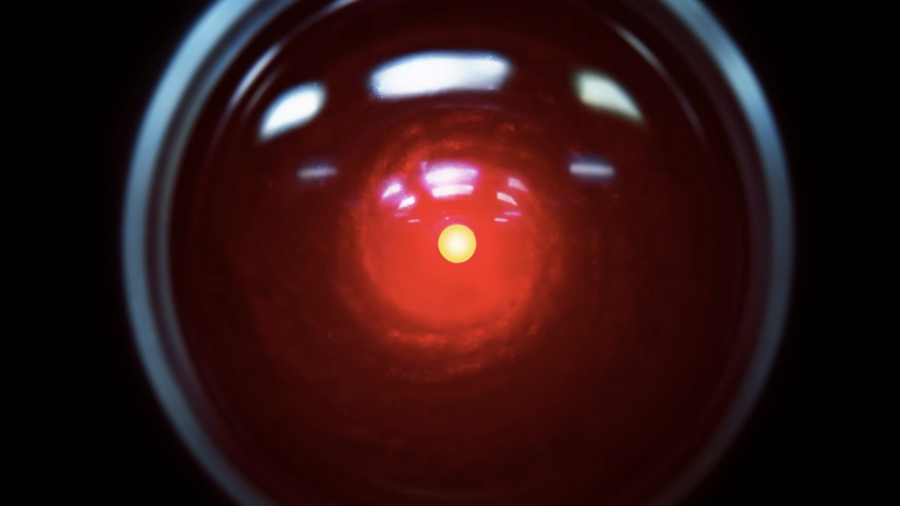By Becca Lewis
| Published

Human technology isn’t as far removed from science fiction as we might think. Although many of the concepts that science fiction works imagine aren’t real, many modern inventions were inspired by the genre. From cell phones to automatic sliding doors, science fiction inventions are more of a predictor of reality than a departure from it.
1. 3D-Printed Food

TV shows like The Jetsons and Star Trek introduced the idea of automatic food production via the programmable Foodarackacycle and the replicator. While these science fiction inventions seemed outside the realm of possibility when they were first introduced, 3D-printed food is now a real technology that’s developing new abilities to create food from a programmable device.
2. Bionic Limbs

Bionic limbs have been an emerging technology for the past decade or so, allowing people who have lost a limb to have a functional replacement.
The 1960 essay “Cyborg” by Manfred Clynes and Nathan S. Kline is one of the earliest places where science fiction wrote about bionic limbs. Star Wars then introduced the idea of bionic limbs to popular culture after Luke got his arm chopped off by Darth Vader in Star Wars Episode 5: The Empire Strikes Back. Luke’s replacement hand is a computer-controlled limb that interfaces with his nervous system, a science fiction invention that sounds a lot like a bionic limb.
3. Digital Billboards

Big, animated advertisements seem run-of-the-mill these days, but the technology to create one is relatively new. When Blade Runner introduced this concept in 1982, it was still very much a science fiction invention, even though we’re bombarded with digital billboards on a regular basis now, from highways to airports. Digital billboards that are motion-activated and cater to a specific interaction are now live in various places all over the world.
4. Moving Walkways

The Jetsons popularized the idea of moving walkways that took people from place to place efficiently, but they didn’t invent it. By then, moving walkways were already a reality, having been introduced at the World’s Fair in 1900.
Prior to their actual invention, author Edward Bellamy imagined a network of mechanical sidewalks in his 1888 book Looking Backwards. Various other depictions of moving walkways have appeared in science fiction, from H.G. Wells’ When the Sleeper Wakes to Robert A. Heinlein’s The Roads Must Roll.
5. Cell Phones And Smart Watches

Star Trek: The Original Series is often credited with having invented cell phones, with their flip communicators, although the Dick Tracy comic strip had a two-way wrist-worn TV communicator in 1946. The cell phone as we use it now evolved from the telephone as well as the two-way radio of the past.
6. AI Assistants

Long before Siri or Alexa became household names, science fiction imagined voice assistants as integral to daily life. In 1968’s 2001: A Space Odyssey, HAL 9000 was a sentient computer that responded to spoken commands—sometimes too intelligently. Decades earlier, Ray Bradbury’s There Will Come Soft Rains (1950) featured a fully automated house that took verbal instructions and operated independently. Star Trek’s talking computers further normalized the idea of conversational machines. These fictional assistants weren’t just tools—they were characters, anticipating modern AI’s role in homes, phones, and cars. Today’s voice tech owes its inspiration to these prophetic sci-fi visions.
7. Robot Vacuums

The idea of robot vacuums first appeared in science fiction long before they rolled into real homes. In Ray Bradbury’s 1950 short story “There Will Come Soft Rains”, an automated house includes cleaning robots that tidy up without human input—an early vision of domestic machines replacing chores. The concept of self-moving floor cleaners also appeared in animated sci-fi like The Jetsons (1962), which featured robotic maids with vacuuming abilities. These fictional visions became reality with the Electrolux Trilobite in 1996 and especially the iRobot Roomba in 2002, which brought Bradbury’s once-fantastical idea of autonomous cleaning machines into everyday life.
8. The Entire Internet

The internet was foreseen in science fiction long before it became a reality. In The Machine Stops (1909), E.M. Forster imagined a world where people live isolated lives, communicating and accessing knowledge entirely through a vast, interconnected machine—eerily resembling the internet and video conferencing. Decades later, in Neuromancer (1984), William Gibson coined the term “cyberspace”, envisioning a global virtual network where users navigate data like a physical world. Though the real internet began taking shape in the late 1960s with ARPANET, these sci-fi stories predicted not just the technology—but how profoundly it would transform human communication and society.
